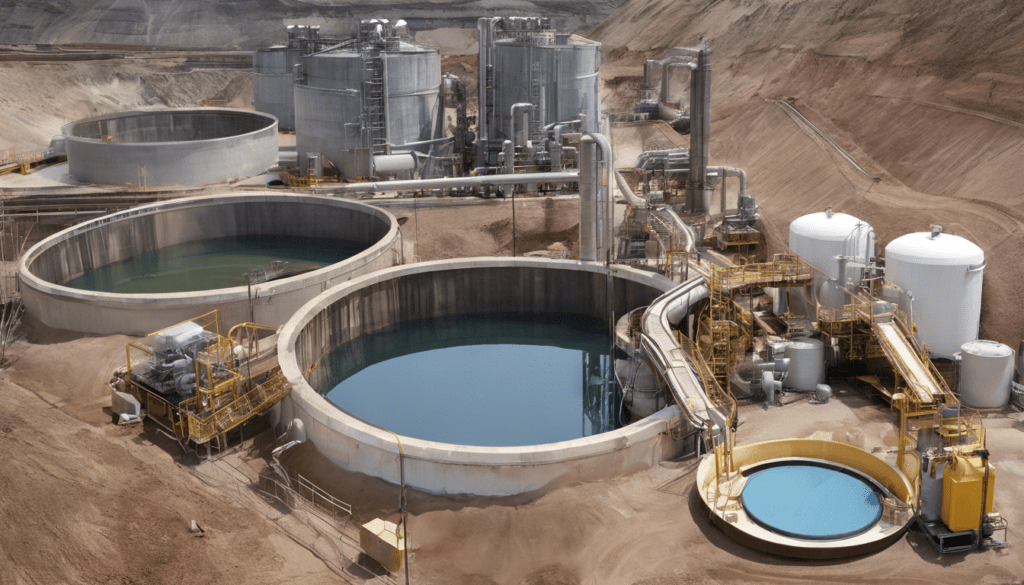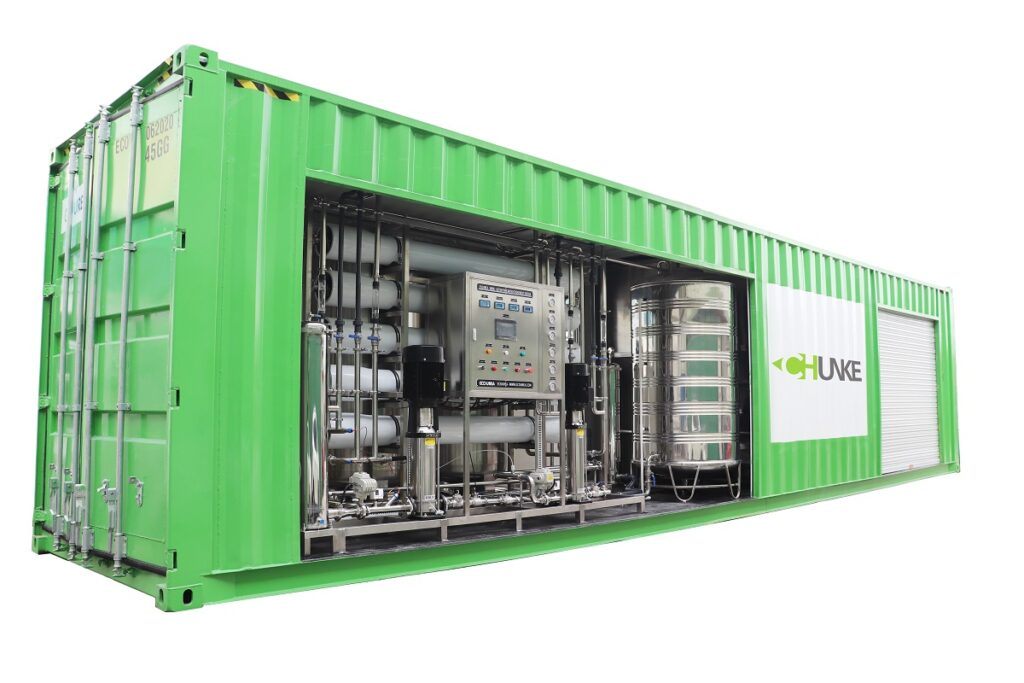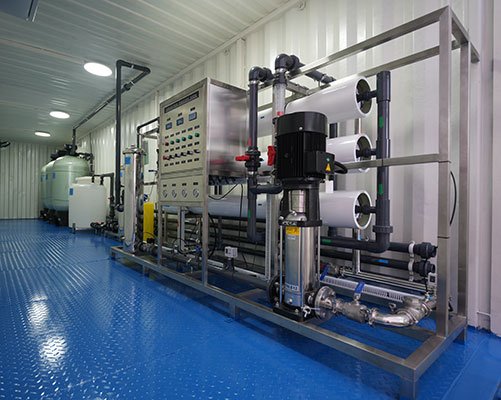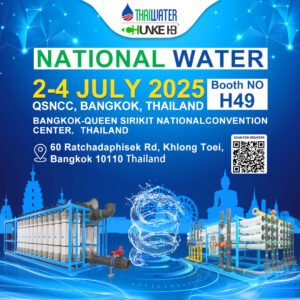
In the realm of mining, minerals, and metal industries, water is a pivotal resource, not only for the extraction process but also for maintaining the delicate balance of our ecosystems. We understand that effective water treatment for mining is crucial to ensuring that operations are sustainable, environmentally friendly, and economically viable. The challenges posed by mine water, from contamination to scarcity, necessitate innovative and reliable mining water technologies. Our commitment lies in providing holistic water care mining solutions, leveraging advanced treatments such as reverse osmosis, ultrafiltration, and containerized water treatment for mining, to meet the stringent quality standards required for water reuse and recovery.
As we delve into the complexities of water management in mining, our article will explore the significance of cutting-edge mining water management strategies, from membrane systems designed for water recovery to mining filtration processes that maximize water reuse. We will provide insights into the implementation of a Mine Water Treatment Plant and discuss the benefits of integrating water treatment technologies, like reverse osmosis for mining, that ensure the supply of clean and safe water. Through case studies and real-world applications, we aim to showcase how sustainable water management in mining can lead to enhanced efficiency, reduced environmental impact, and a positive shift towards water conservation in the mining industry.
Importance of Water Treatment in Mining Operations
Why Water is Crucial in Mining
We recognize the extensive use of water in the extraction of critical minerals, such as lithium, which is vital for electric vehicle batteries and solar panels. These processes are notably water-intensive . In regions like Chile’s Salar de Atacama, the mining of lithium and copper consumes over 65% of the local water supply, highlighting the significant impact on water resources . Furthermore, the mining operations in various global locations, including cobalt extraction in the Democratic Republic of Congo and graphite mining in China, raise similar concerns about water use and contamination.

Environmental and Regulatory Concerns
The repercussions of inadequate water management in mining are profound, influencing not only environmental but also social and economic realms. Risks associated with water usage include the potential for pollution from seepages, spills, and tailing dam failures, which have been recognized as major financial liabilities . Regulatory challenges also arise, as mining operations can face severe penalties and operational halts if they fail to comply with stringent water standards.
Our commitment at Chunke Water Treatment is to address these challenges head-on. Our containerized water treatment plants are specifically designed to produce high-quality, clean, and safe water, ensuring compliance with environmental regulations and supporting sustainable mining practices. This approach not only helps in managing the water-related risks effectively but also supports the ecological balance and local communities dependent on these water resources.
Technologies and Solutions for Mining Water Treatment
Membrane Systems (RO, UF)
We employ advanced membrane technologies such as Reverse Osmosis (RO) and Ultrafiltration (UF) to address the complex challenges of mining water treatment. RO systems are pivotal, using pressure to force water through semi-permeable membranes, effectively removing dissolved salts and contaminants . This method is particularly beneficial in treating high salinity mining wastewater, ensuring the production of high-quality water that can be reused, reducing the operational costs associated with water procurement . Similarly, UF systems utilize a membrane barrier to remove microorganisms and suspended solids, providing an additional layer of purification that supports the overall effectiveness of our water treatment processes.
Chemical Treatments
Our approach to chemical treatments in mining water involves the strategic use of coagulants, flocculants, and pH adjusters. These chemicals facilitate the removal of metals and solids by altering the physical properties of contaminants, making them easier to filter out . For instance, adjusting the pH levels of mining water not only restores it to optimal conditions but also aids in precipitating dissolved metals, thus enhancing the water quality for safe discharge or reuse . Our specially formulated chemicals ensure that the water treatment processes are efficient and cost-effective, aligning with environmental compliance and operational needs.
Biological Treatments
Biological treatments in our processes incorporate the use of microorganisms to degrade organic pollutants present in mining wastewater. This eco-friendly approach not only helps in reducing the levels of contaminants but also enhances the natural biodegradation processes . We utilize technologies like Biofilm Reactors and Anaerobic Filters, which support the growth of beneficial microbial populations that play a crucial role in the treatment of mining-influenced water (MIW) . These biological systems are designed to be robust and adaptable, ensuring long-term sustainability and effectiveness in treating mining wastewater under varied operational conditions.
Our containerized water treatment plants are specifically designed to integrate these technologies, ensuring that they produce high-quality, clean, and safe water, which is crucial for sustainable mining operations.

Case Studies and Real-world Applications
In our exploration of real-world applications and successful projects in water treatment for mining, we highlight significant advancements and regional strategies that underscore the critical nature of sustainable practices in the mining sector.
Successful Projects
1. Mongolia and Antofagasta, Chile:
In Mongolia, a comprehensive country-wide water management framework divides administration into management basins, addressing both the economic importance of mining and its environmental impacts . Similarly, Chile’s regional approach in Antofagasta integrates mining into state-administered water management frameworks, ensuring that mining activities are harmonized with other water uses and environmental safeguards.
2. Advanced Wastewater Treatment Technologies
A leading gold mine producer has implemented a compact wastewater treatment plant using Veolia’s technologies, including the Actiflo® high-rate clarifier and Hydrotech™ Discfilter. These technologies ensure the removal of Total Suspended Solids (TSS) and heavy metals, meeting stringent discharge criteria while optimizing land use.
Figures and Statistics
- Water Stress in Mining Regions: At least 16% of the world’s land-based critical mineral mines are located in areas facing high or extremely high levels of water stress. This statistic highlights the urgent need for effective water management strategies to mitigate environmental impacts and support sustainable mining practices .
- Lithium Extraction in the Lithium Triangle: The process of extracting lithium in South America’s Lithium Triangle is notably water-intensive, using up to half a million gallons of brine water per ton of lithium extracted. This practice not only affects freshwater resources but also poses risks to local communities by depleting and contaminating their water supplies .
Our commitment at Chunke Water Treatment is evident in our tailored solutions, such as our containerized water treatment plants, designed to address these complex challenges by producing high-quality, clean, and safe water, essential for sustainable mining operations. This approach not only mitigates environmental impacts but also enhances the efficiency and sustainability of mining activities worldwide.
Conclusion
Through our exploration and discussion, it becomes evident that the intersection of water treatment and the mining, minerals, and metal industries is of paramount importance, not just for environmental sustainability but also for the future of mining operations. The advanced solutions and technologies, such as reverse osmosis and ultrafiltration, showcased in this article, emphasize our commitment at Chunke Water Treatment to deploying comprehensive, environmentally responsible water treatment processes. By integrating cutting-edge technologies and tailor-made solutions such as containerized water treatment plants, we aim to support the mining industry in meeting their water quality standards efficiently and effectively, ensuring that operations can be both economically viable and environmentally friendly.
Our discussion underscores the critical role of effective water management and treatment in sustaining the delicate balance between mining operations and ecological preservation. The broader implications of these efforts stretch far beyond immediate operational benefits, potentially leading to a paradigm shift in how resources are extracted and utilized worldwide. For miners looking to secure a future where both their operations and the environment can thrive side by side, Chunke Water Treatment stands ready to provide high-quality, clean, and safe water solutions tailored to your specific needs. Discover how we can support your operations towards sustainability and operational excellence by getting in touch with us today.
FAQs
1. What techniques are used to treat water in the mining industry?
Several techniques are employed in the treatment of mining wastewater, including evaporation and crystallization, biological processes, ion exchange, package plants, desalination, clarification, disinfection, zero liquid discharge, and membrane separation.
2. What is the process for treating water from mines?
To treat water from mines, it is generally pumped to the top of a cascade structure and allowed to flow down a series of steps. This exposure to air helps dissolved iron to solidify. Subsequently, the water passes through reed beds and lagoons, where iron deposits accumulate at the bottom as ochre.
3. How can mining operations prevent water pollution?
Mining companies can prevent water pollution by relocating and isolating mine waste that could produce acid mine drainage (AMD) when it interacts with water. This often involves moving the waste above the water table, treating it, and covering it with an impermeable layer to prevent contact with groundwater and surface water.
4. How is wastewater managed in mineral processing?
In mineral processing, wastewater is treated through various methods such as sedimentation, filtration, chemical precipitation, and biological treatment. These processes effectively remove suspended solids, heavy metals, and other contaminants from the wastewater, thereby rendering it safe for disposal or reuse. You should check our containerized water treatment plant.

